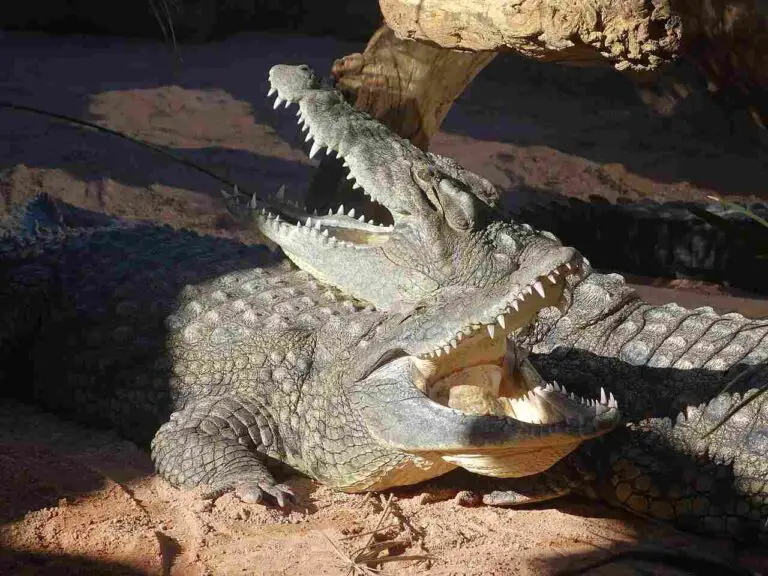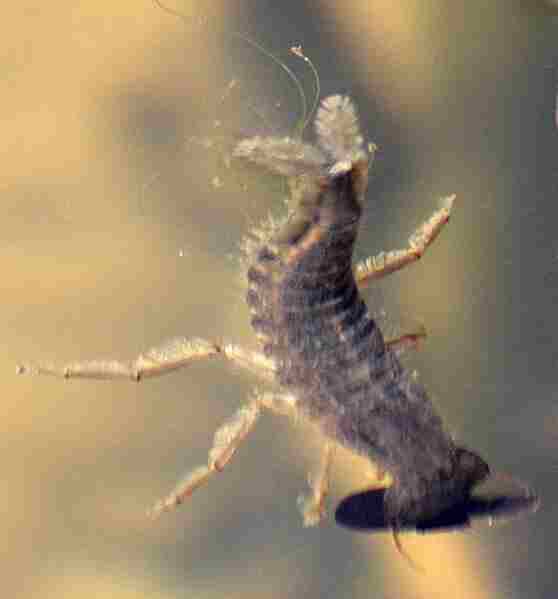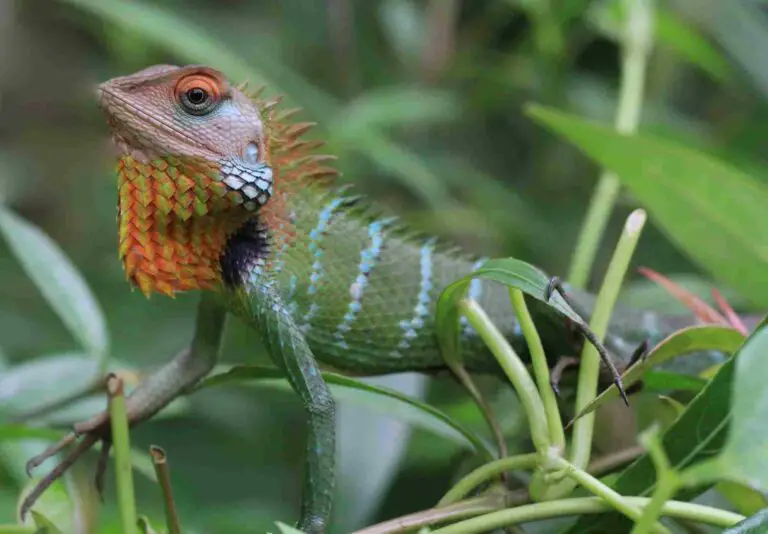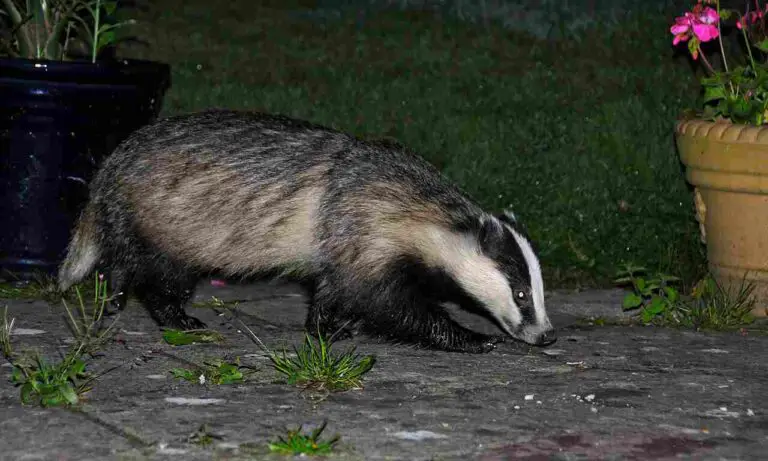Bobcat Vs Pitbull Who Would Win, and Overall Comparison
In a speculative scenario pitting a bobcat against a Pitbull, we delve into their characteristics to anticipate the potential outcome of a one-on-one confrontation. This analysis considers their taxonomy, appearance, size, weight, agility, aggressiveness, and predatory features.
Bobcat vs Pitbull: Assessing the Likely Victor in a Confrontation
In a theoretical showdown between a bobcat and a Pitbull, the bobcat is likely to emerge as the victor, even though the Pitbull is generally stronger. This prediction is based on the bobcat’s superior speed, agility, sharper predatory instincts, and features like claws and teeth.
I). Speed and Agility:
– Bobcats, known for their agility and speed, can outmaneuver a Pitbull in a confrontation. The bobcat’s ability to swiftly navigate the terrain provides a crucial advantage in avoiding and countering the Pitbull’s attacks.
II). Predatory Instincts:
– Bobcats possess sharper predatory instincts honed through their natural hunting behavior. This predatory acumen could give the bobcat an edge in strategizing and executing effective counterattacks against the Pitbull.
III). Features: Claws and Teeth:
– The bobcat’s claws and teeth are formidable weapons in a physical confrontation. These natural weapons, combined with the bobcat’s agility, allow it to inflict significant damage and potentially subdue a Pitbull, even if the latter is generally stronger.
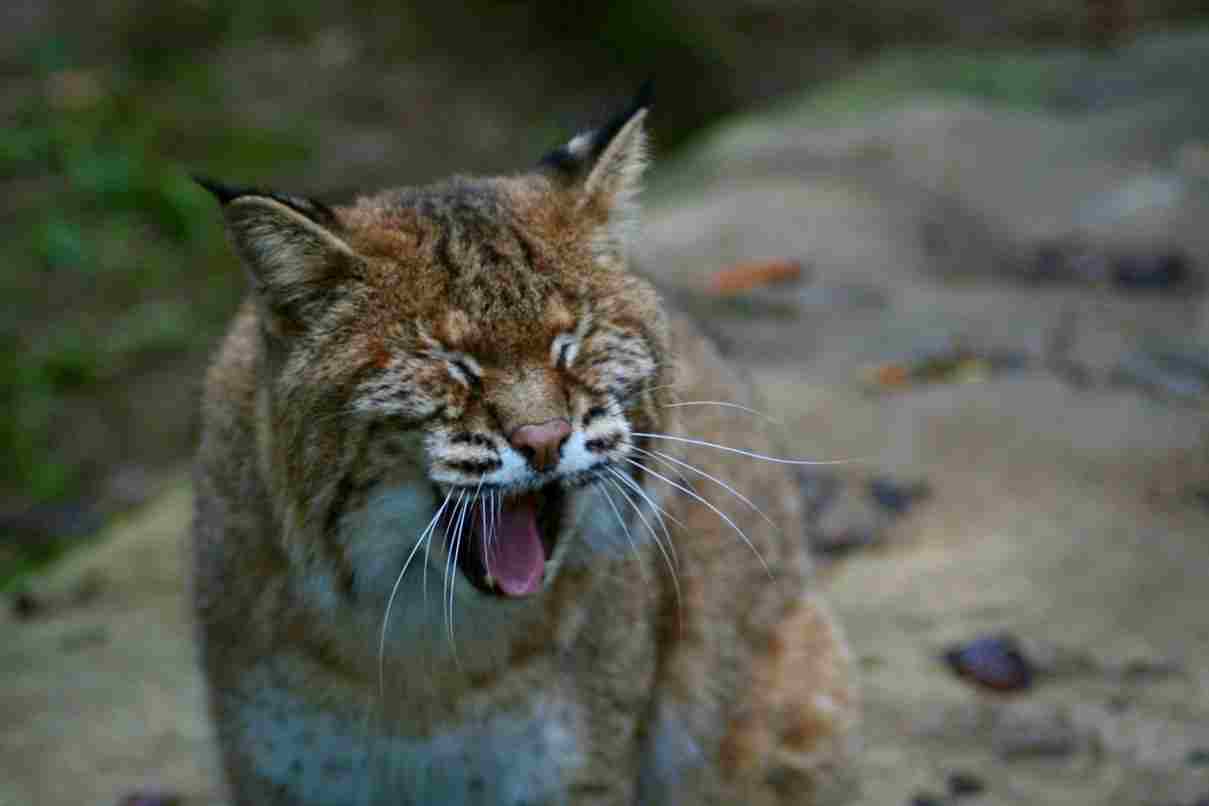
IV). Similar Weight Consideration:
– If the bobcat and Pitbull are of similar weight, the bobcat’s advantages in speed, agility, predatory instincts, and weaponry may tip the scales in its favor. While the Pitbull is stronger overall, the bobcat’s combination of traits provides a strategic advantage in a one-on-one encounter.
V). Overall Verdict:
– In a one-on-one fight, especially if they are of similar weight, the bobcat is likely to win against a Pitbull. The bobcat’s superior speed, agility, sharper predatory instincts, and natural weaponry offset the Pitbull’s general strength, making it a formidable adversary in a potential confrontation.
*Details of Comparison
| Criteria | Bobcat | Pitbull |
| Taxonomy | Kingdom: Animalia
Genus: Lynx Species: L. rufus |
Kingdom: Animalia
Genus: Canis
Species: C. lupus familiaris
|
| Appearance | Spotted coat, tufted ears, compact body |
Stocky build, broad head, various coat colors
|
| Size | 28 to 40 inches (body) |
17 to 21 inches (shoulder height)
|
| Weight | 15 to 35 pounds (males larger) | 30 to 85 pounds |
| Bite Force | Around 600 PSI | Around 235 PSI |
| Offensive Advantages | Claws, strong bite, agility |
Strong jaws, agile movement
|
| Defensive Advantages | Agility, sharp claws, strong bite |
Muscular build, agility
|
| Speed | 25 to 30 mph | 25 to 30 mph |
| Agility | Highly agile, flexible body |
Agile and nimble, quick movements
|
| Capacity | Balanced strength, agility, sensory perception |
Versatile abilities, strength, agility, endurance
|
| Habitat Preference | Diverse habitats, prefers cover |
Adaptable to various human environments
|
| Tracks | Retractable claws, “M” shape in heel pad |
Visible claws, rounder prints
|
| Lifespan | 7 to 10 years (wild), up to 15 years (captivity) | 10 to 15 years |
| Feeding | Carnivorous, hunts small mammals |
Omnivorous, commercial dog food
|
| Social Behavior | Generally solitary, limited social interactions |
Social, forms strong bonds with humans
|
| Reproduction | Seasonal breeding, gestation 60-70 days |
Year-round breeding, gestation around 63 days
|
| Parental Behavior | Female raises offspring independently |
Both genders may actively participate
|
| Proximity to Humans | Avoids, may enter, prefers secluded areas |
Domesticated, comfortable in human settings
|
| Behavior Toward Humans | Elusive, defensive if threatened |
Affectionate, loyalty; may show aggression
|
| Danger to Humans | Rarely poses direct threat, defensive if cornered |
Generally not inherently dangerous, individual variations
|
| Precautions | Caution in known areas, avoid feeding |
Responsible ownership, training, socialization
|
| Conservation Status | Least Concern, localized threats |
Domesticated, not classified on IUCN Red List
|
Key Points:
- Bobcats are wild carnivores with a seasonal breeding pattern, adapted to diverse natural habitats.
- Pitbulls, domesticated dogs, exhibit versatility in roles, including companionship and working tasks.
- Bobcats have a conservation status, while pitbulls are managed through controlled breeding and responsible ownership.
- Both share similarities in carnivorous background, agility, and the need for responsible human interactions.
- Differences include their wild vs. domesticated nature, solitary vs. social behavior, and conservation considerations.
1. Taxonomy:
Bobcat (Lynx rufus)
Kingdom: Animalia
Phylum: Chordata
Class: Mammalia
Order: Carnivora
Family: Felidae
Genus: Lynx
Species: L. rufus
Pitbull (Pit Bull)
Kingdom: Animalia
Phylum: Chordata
Class: Mammalia
Order: Carnivora
Family: Canidae (often debated)
Genus: Canis
Species: C. lupus familiaris
2. Appearance:
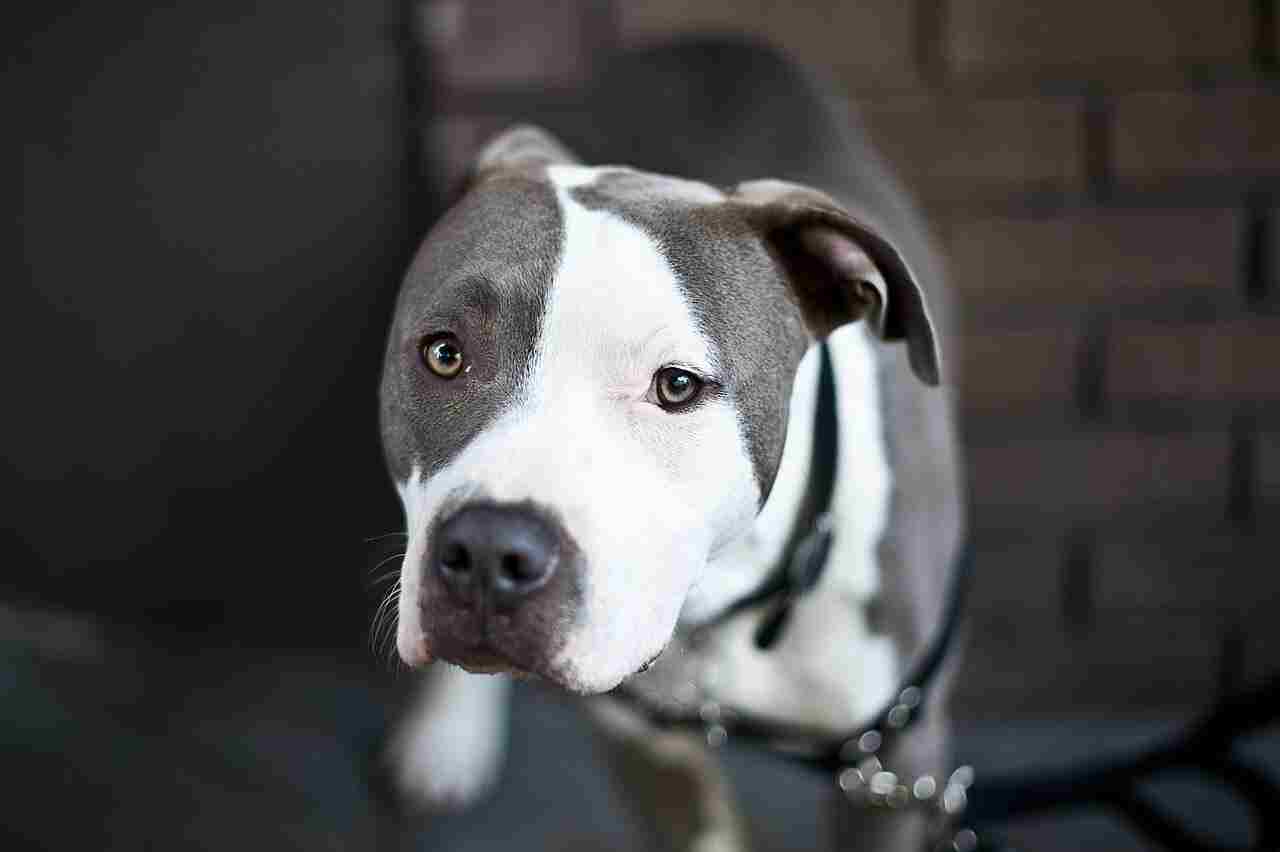
Bobcat:
Compact and muscular body
Short, dense fur with distinctive spots and a short tail
Tufted ears and facial ruff
Pitbull:
Stocky and athletic build
Smooth or short coat, variable colors
Broad head with strong jaws
Comparison:
Bobcats have a wild, feline appearance with spotted coats.
Pitbulls display a more domesticated look with various coat colors.
Ecological Implications:
Bobcat appearances are adapted for camouflage in natural environments.
Pitbulls, shaped by selective breeding, often reflect human preferences for certain physical traits.
3. Size:
Bobcat:
Length: 28 to 40 inches (body), 5 to 8 inches (tail)
Pitbull:
Length: 17 to 21 inches (shoulder height)
Comparison:
Bobcats are generally larger than pitbulls, especially considering their longer tails.
Pitbulls are compact, medium-sized dogs.
Ecological Implications:
Bobcats’ size aids in hunting various prey in the wild.
Pitbulls’ size makes them versatile for different roles, including companionship and working tasks.
4. Weight:
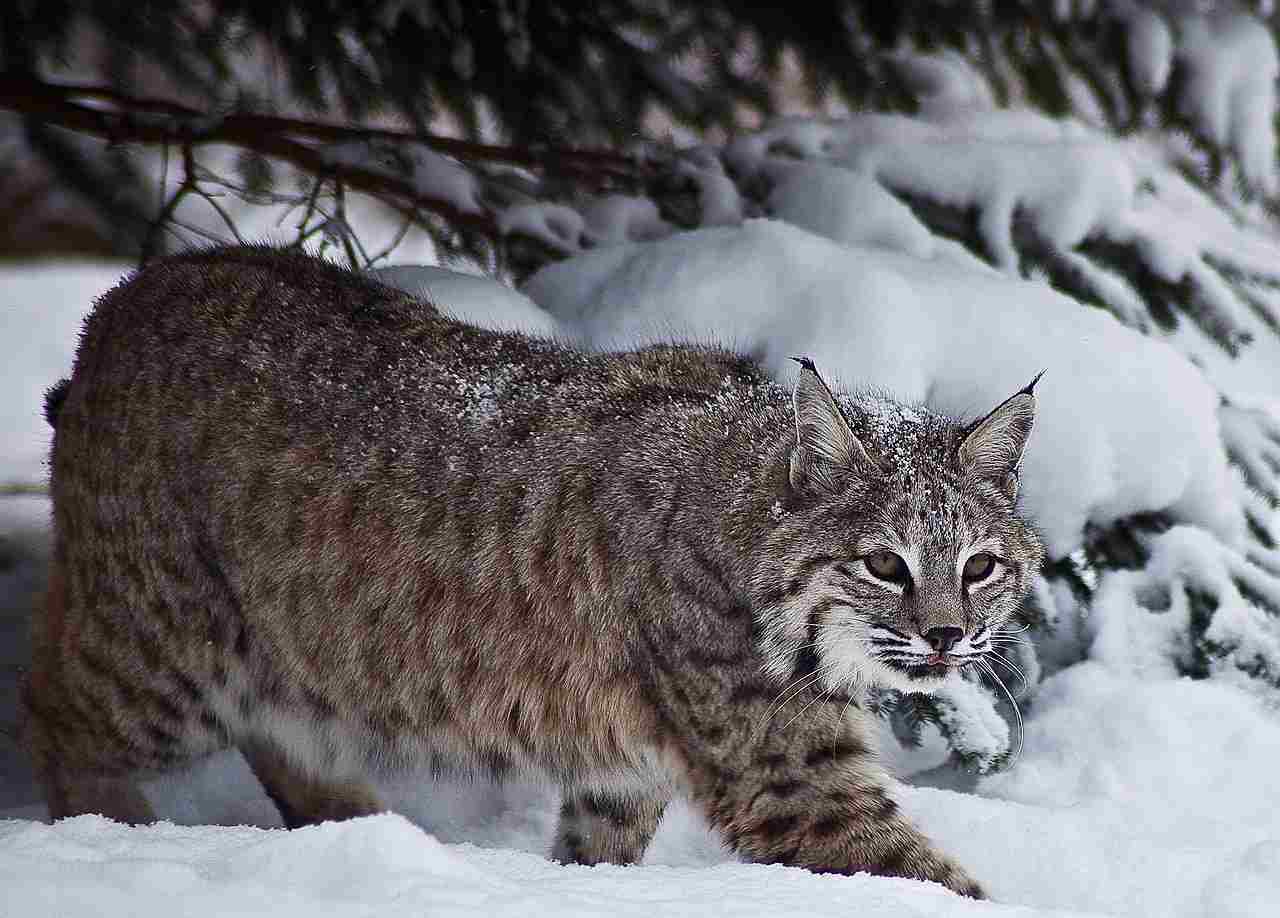
Bobcat:
15 to 35 pounds (males are larger)
Pitbull:
30 to 85 pounds
Comparison:
Bobcats are generally lighter than pitbulls.
Pitbulls exhibit a wide range in weight, influenced by breed variations.
Ecological Implications:
Bobcats’ moderate weight allows for agility in hunting.
Pitbulls’ weight variations cater to diverse roles, from agility in smaller breeds to strength in larger ones.
5. Bite Force:
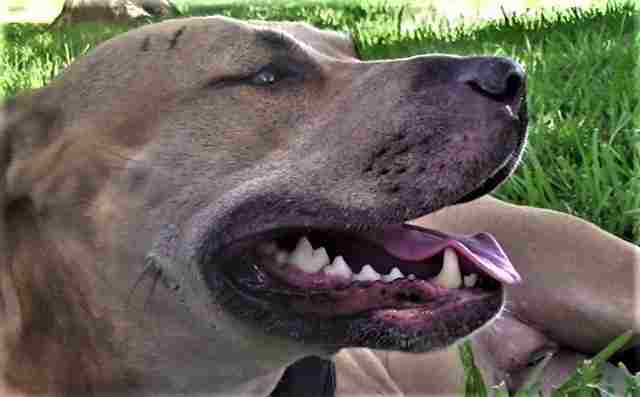
Bobcat:
Estimated to be around 600 pounds per square inch (PSI)
Pitbull:
Varies, but averages around 235 PSI
Comparison:
Bobcats have a higher estimated bite force compared to pitbulls.
Pitbulls, while strong, exhibit a bite force less than that of bobcats.
Ecological Implications:
Bobcats’ strong bite is essential for subduing prey in the wild.
Pitbulls’ bite force reflects their domestication and varied historical roles.
6. Physical Offensive Advantages:
Bobcat:
Sharp retractable claws and powerful bite
Enhanced agility for ambushing and pouncing on prey
Pitbull:
Strong jaws and tenacious bite
Agile movement for chasing and holding onto targets
Comparison:
Bobcats rely on claws and a strong bite for offensive tactics.
Pitbulls use their powerful jaws and agility for offensive actions.
Ecological Implications:
Bobcats’ offensive features are adapted for hunting in diverse environments.
Pitbulls’ offensive traits align with their historical roles in various tasks, including hunting and guarding.
7. Physical Defensive Advantages:
Bobcat:
Agility for evading threats
Sharp claws and strong bite for self-defense
Pitbull:
Muscular build provides physical resilience
Responsive agility for avoiding or countering threats
Comparison:
Both bobcats and pitbulls rely on agility and physical traits for defense.
Bobcats use claws and a strong bite defensively, while pitbulls emphasize physical resilience.
Ecological Implications:
Defensive strategies of bobcats contribute to their survival in the wild.
Pitbulls’ defensive capabilities are adapted to a domestic context, including potential confrontations with other animals.
8. Speed:
Bobcat:
Can reach speeds of 25 to 30 miles per hour
Pitbull:
Capable of running at speeds around 25 to 30 miles per hour
Comparison:
Similar speeds are observed in both bobcats and pitbulls.
Their comparable speeds align with their roles in hunting or pursuing prey.
Ecological Implications:
Speed is crucial for both species in pursuing prey and evading predators in their respective habitats.
Adaptation of speed contributes to their ecological roles, whether in natural environments or domestic settings.
9. Agility:
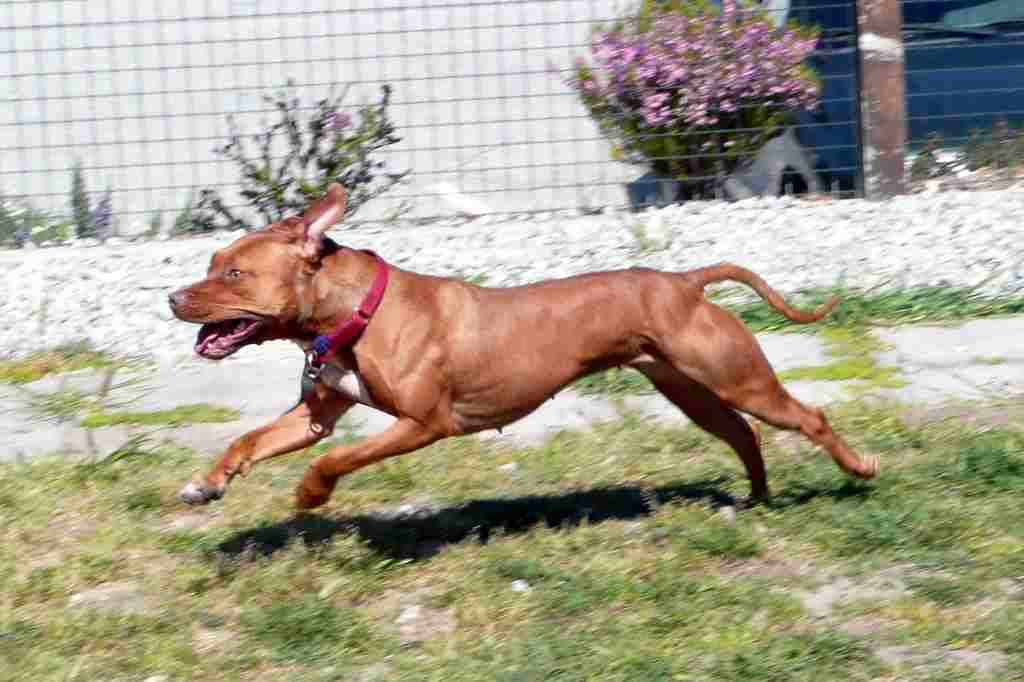
Bobcat:
Highly agile with a flexible body
Can make sharp turns and navigate through various terrains
Pitbull:
Agile and nimble, capable of quick movements
Exhibits agility in tasks such as chasing, herding, or playing
Comparison:
Both bobcats and pitbulls showcase remarkable agility.
Bobcats’ agility is crucial for hunting, while pitbulls’ agility is utilized in various roles, including sports and companionship.
Ecological Implications:
Agility contributes to the success of both species in their respective ecological niches.
Pitbulls’ agility reflects their adaptability to different human-centric activities.
10. Overall Physical Capacity:
Bobcat:
Balanced combination of strength, agility, and sensory perception
Well-adapted for hunting in diverse environments
Pitbull:
Versatile physical abilities, combining strength, agility, and endurance
Suited for various roles, including companionship, working, and sports
Comparison:
Both bobcats and pitbulls possess a balanced set of physical capacities.
Bobcats emphasize adaptations for wild hunting, while pitbulls showcase versatility for human-associated activities.
Ecological Implications:
Bobcats’ physical capacities are finely tuned for survival in natural habitats.
Pitbulls’ adaptability to different roles demonstrates their capacity to integrate into human environments.
11. Habitat Preference(s):
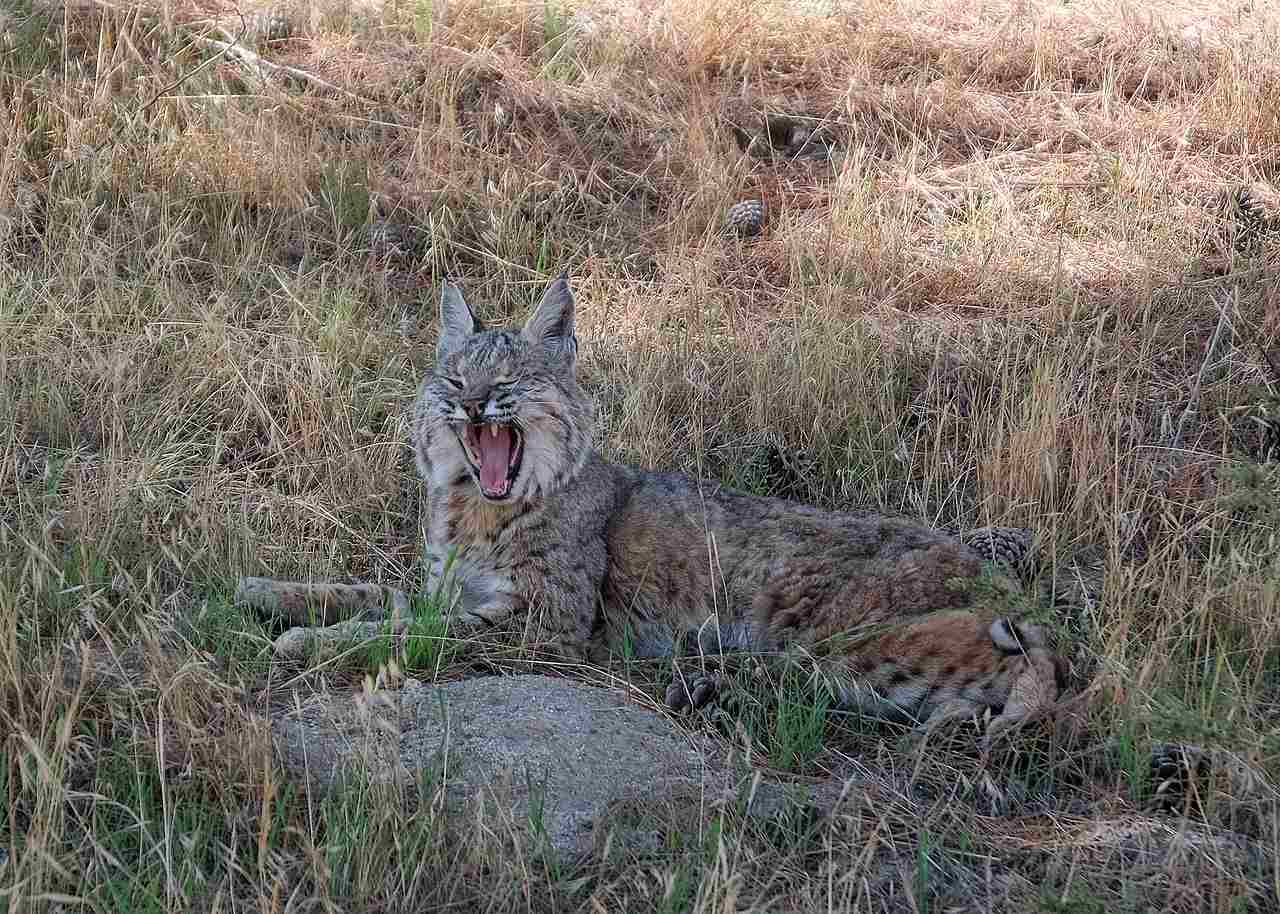
Bobcat:
Diverse habitats including forests, swamps, and deserts
Prefer areas with ample cover for stalking prey
Pitbull:
Domesticated and adaptable to various human environments
Thrives in homes, urban areas, and rural settings
Comparison:
Bobcats exhibit a broader range of natural habitats.
Pitbulls are highly adaptable to human-influenced habitats.
Ecological Implications:
Bobcats’ habitat preferences align with their evolutionary history as wild predators.
Pitbulls’ adaptability to human environments is a result of domestication and selective breeding.
12. Tracks:
Bobcat:
Paw prints with retractable claws visible, often in a more oval shape
Four toe pads and a distinctive “M” shape in the heel pad
Pitbull:
Paw prints with visible claw marks, rounder in shape
Typically show larger imprints compared to wild felids
Comparison:
Bobcat tracks exhibit retractable claw marks, while pitbull tracks show visible claws.
Size and shape differences are noticeable in their paw prints.
Ecological Implications:
Tracking characteristics contribute to their respective hunting and movement strategies.
The distinction in tracks aids in wildlife monitoring and identification.
13. Lifespan:
Bobcat:
Typically 7 to 10 years in the wild, up to 15 years in captivity
Pitbull:
Averaging 10 to 15 years, with variations based on size and health
Comparison:
Bobcats generally have a shorter lifespan compared to pitbulls.
Pitbulls, under optimal conditions, can live longer lives.
Ecological Implications:
Bobcats’ shorter lifespan aligns with the challenges of surviving in the wild.
Pitbulls’ longer lifespan reflects the benefits of domestication, veterinary care, and controlled environments.
14. Mode of Feeding:
Bobcat:
Carnivorous, primarily hunting small mammals like rabbits and rodents
Ambushes and pounces on prey, using its sharp claws and bite
Pitbull:
Omnivorous, with a diet often consisting of commercial dog food
Historically used for hunting and guarding tasks
Comparison:
Bobcats rely on hunting live prey.
Pitbulls are generally fed a controlled diet by humans, with a historical background in hunting.
Ecological Implications:
Bobcats’ hunting behavior maintains ecological balance by controlling prey populations.
Pitbulls’ feeding practices are influenced by human care and dietary decisions.
15. Social Behavior:
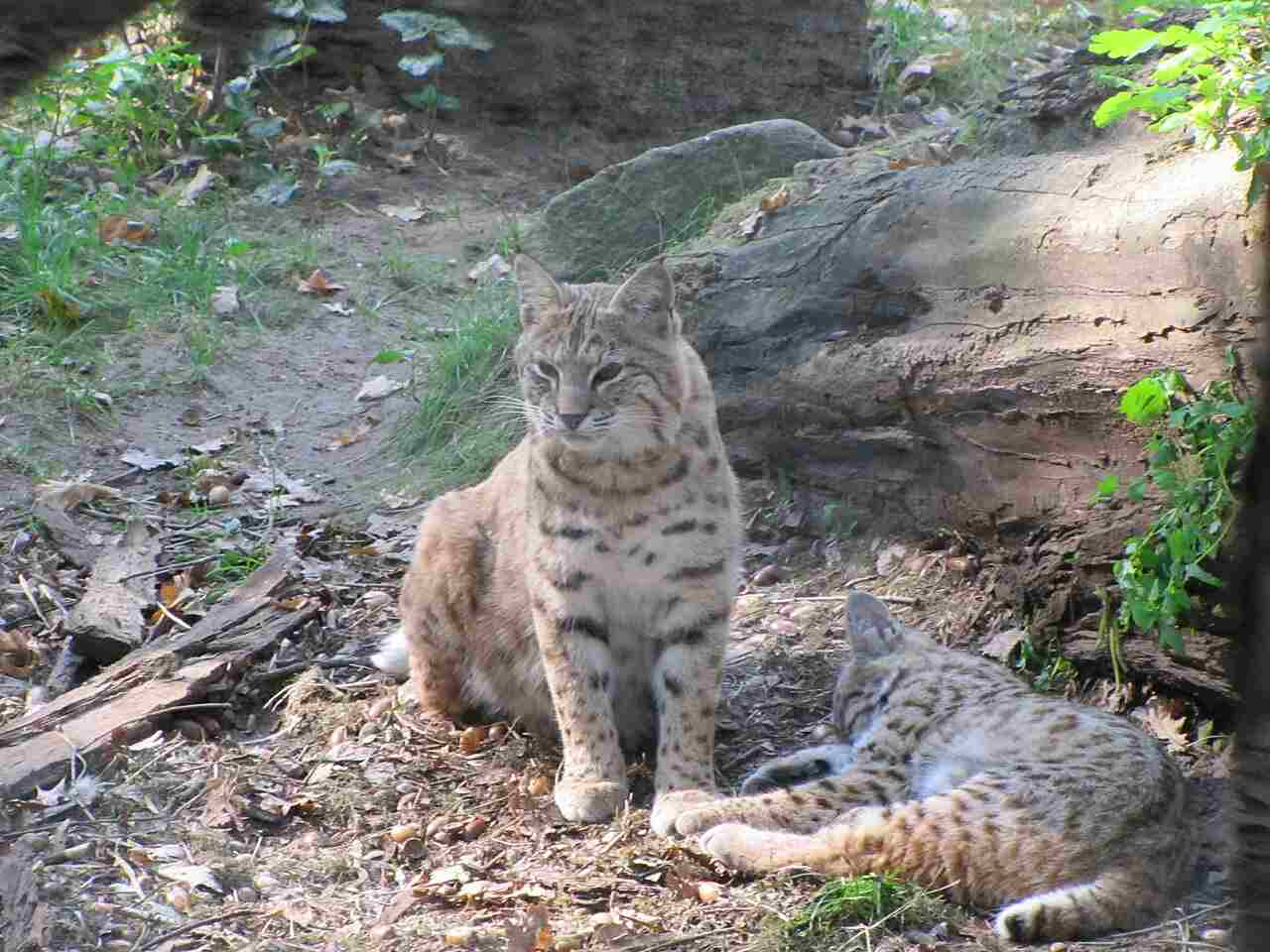
Bobcat:
Generally solitary and territorial animals
Limited social interactions, except during mating season or raising offspring
Pitbull:
Social animals with a strong bond to human families
Varies; some individuals may exhibit aggression towards other dogs
Comparison:
Bobcats are primarily solitary, with brief social interactions.
Pitbulls, known for their social nature, form strong bonds with humans and can coexist with other dogs.
Ecological Implications:
Bobcats’ solitary nature is advantageous for individual hunting territories.
Pitbulls’ social behavior reflects their domestication and adaptation to living in human communities.
16. Mode of Reproduction:
Bobcat:
Seasonal breeding, with a peak in spring
Gestation period of about 60 to 70 days, leading to the birth of a litter of kittens
Pitbull:
Year-round reproductive capability
Gestation period around 63 days, leading to the birth of a litter of puppies
Comparison:
Bobcats exhibit a more defined breeding season.
Pitbulls have the ability to reproduce throughout the year.
Ecological Implications:
Bobcats’ seasonal breeding aligns with the availability of resources in the wild.
Pitbulls’ year-round reproductive capability is a result of domestication and human care.
17. Parental Behavior:
Bobcat:
Female bobcats raise and care for their offspring independently
Kittens stay with the mother until they learn to hunt
Pitbull:
Both male and female pitbulls may actively participate in raising their puppies
Human intervention often supports the well-being of the puppies
Comparison:
Bobcat mothers are primarily responsible for raising their kittens.
Pitbulls, with human support, may have more collaborative parental roles.
Ecological Implications:
Bobcats’ solitary parenting suits their independent lifestyle in the wild.
Pitbulls’ collaborative parental behavior aligns with their domesticated nature and interaction with human caregivers.
18. Proximity to Human-Inhabited Areas:
Bobcat:
Generally avoids human-populated areas but can adapt to suburban environments
Human encounters may occur near natural habitats or during scarce food availability
Pitbull:
Domesticated and comfortable in human settings
Commonly found in urban, suburban, and rural areas as pets
Comparison:
Bobcats may enter human-inhabited areas but often prefer more secluded habitats.
Pitbulls are well-adapted to living closely with humans.
Ecological Implications:
Bobcats’ occasional presence in human areas may lead to wildlife-human interactions.
Pitbulls’ close association with humans reflects their domestication and role as companion animals.
19. Behavior Toward Humans:
Bobcat:
Generally elusive and avoids direct contact with humans
May display defensive behavior if cornered or threatened
Pitbull:
Known for loyalty and affection towards human family members
Individual variations, and some may display aggression if not properly socialized
Comparison:
Bobcats tend to avoid humans and may be secretive in their interactions.
Pitbulls are often affectionate and loyal but can display aggression based on individual temperament and socialization.
Ecological Implications:
Bobcats’ avoidance of humans contributes to their survival in the wild.
Pitbulls’ behavior is influenced by their domestication and socialization experiences with humans.
20. Danger Posed to Humans:
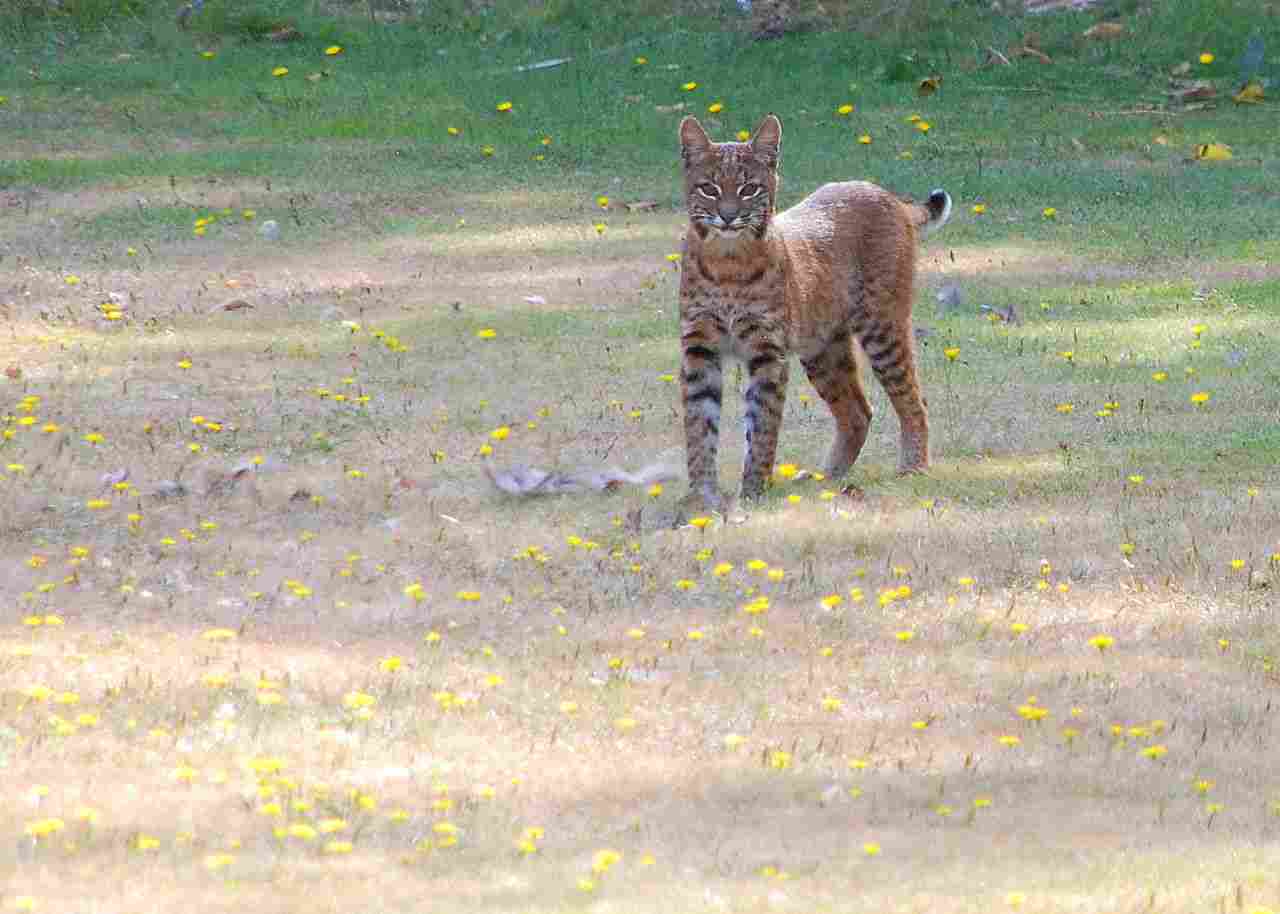
Bobcat:
Rarely poses a direct threat to humans
May become aggressive if cornered or if a perceived threat to their kittens
Pitbull:
Generally not inherently dangerous, but individual behavior varies
Cases of aggression often linked to factors like mistreatment, lack of socialization, or breeding for aggression
Comparison:
Bobcats are not typically considered dangerous to humans unless provoked.
Pitbulls’ perceived danger is often linked to individual behavior influenced by various factors.
Ecological Implications:
Bobcats’ minimal threat to humans contributes to coexistence in shared environments.
Pitbulls’ perceived danger emphasizes the importance of responsible ownership, training, and socialization.
21. Associated Precautions:
Bobcat:
Caution advised in areas where bobcats are known to be present
Avoid feeding them and maintain a safe distance
Pitbull:
Responsible ownership, training, and socialization are crucial
Leash laws and proper containment to prevent unwanted interactions
Comparison:
Precautions around bobcats involve maintaining a respectful distance and not attracting them with food.
Precautions around pitbulls focus on responsible ownership practices to ensure safe interactions with humans and other animals.
Ecological Implications:
Human awareness and precautions help mitigate potential conflicts with bobcats in shared habitats.
Responsible ownership practices contribute to the positive coexistence of pitbulls with humans.
22. Conservation Status:
Bobcat:
Least Concern (LC) on the International Union for Conservation of Nature (IUCN) Red List
Populations generally stable, but localized threats exist
Pitbull:
Domesticated breed, not classified on the IUCN Red List
Populations are controlled through breeding and ownership practices
Comparison:
Bobcats are a wild species with a conservation status classification.
Pitbulls, being domesticated, are not subject to conservation assessments.
Ecological Implications:
Bobcats’ conservation status reflects the need to address localized threats and maintain biodiversity.
Pitbull populations are managed through controlled breeding and responsible ownership, ensuring their well-being in human-centric environments.
Summary of Comparison
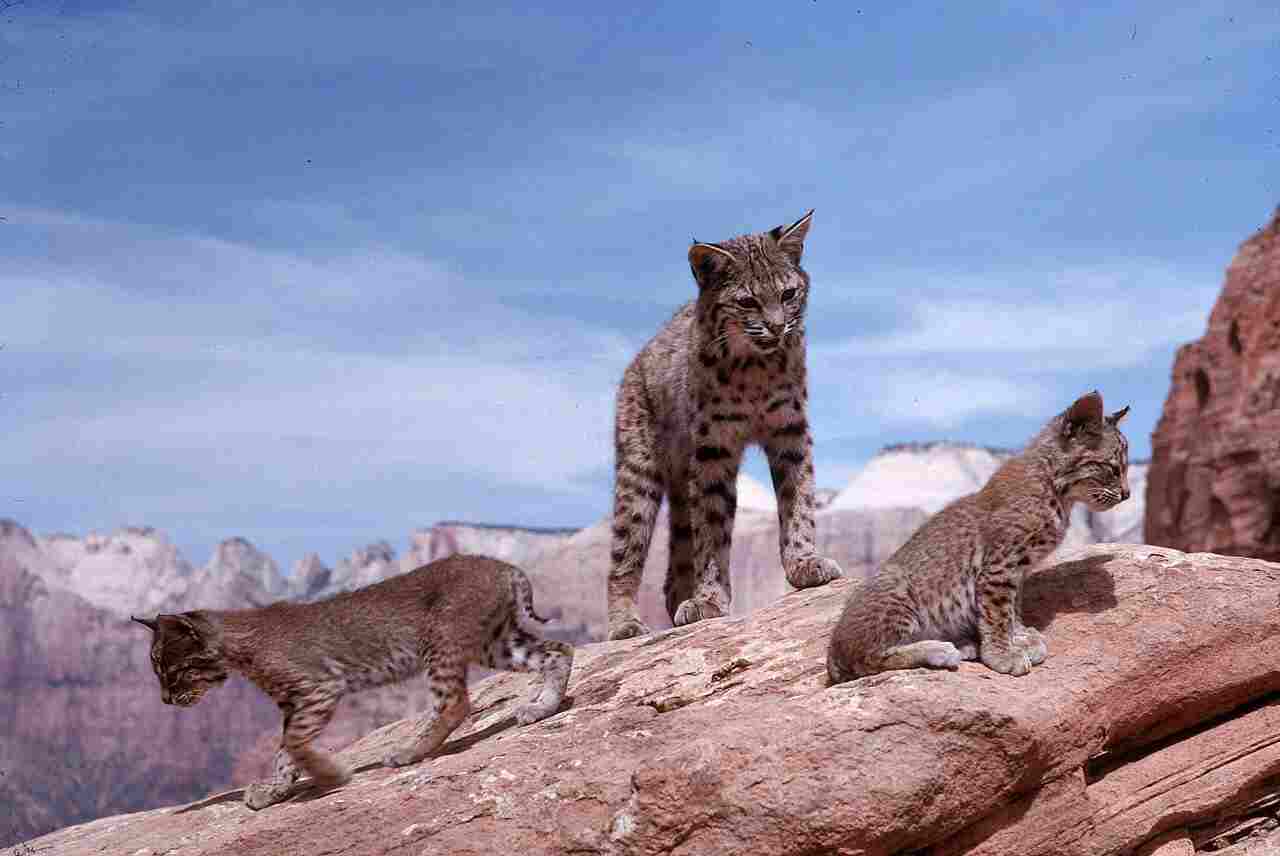
Bobcat:
Ecology: Wild, carnivorous predator with a preference for diverse natural habitats.
Physical Traits: Compact, muscular build with retractable claws and a strong bite.
Behavior: Generally solitary, elusive, and cautious around humans.
Reproduction: Seasonal breeding, with a shorter lifespan in the wild.
Conservation: Least Concern status, with localized threats requiring attention.
Pitbull:
Ecology: Domesticated dog, adaptable to human-inhabited environments.
Physical Traits: Stocky build, strong jaws, and varied coat colors.
Behavior: Social, with loyalty to human families; individual temperament varies.
Reproduction: Year-round breeding, with a longer lifespan under human care.
Conservation: Not classified on the IUCN Red List; managed through controlled breeding and responsible ownership.
Similarities: Carnivorous background, agility, and the need for responsible human interactions.
Differences: Wild vs. domesticated nature, solitary vs. social behavior, and conservation considerations.
Significance: Understanding ecological roles aids wildlife conservation, while responsible ownership is crucial for positive human-animal relationships.
Conclusion
– Similarities:
Both bobcats and pitbulls share a carnivorous background.
They exhibit remarkable agility and physical adaptations for hunting or working roles.
Human encounters with these species require awareness and responsible behavior.
– Differences:
Bobcats are wild, solitary predators adapted to diverse natural habitats.
Pitbulls are domesticated dogs, exhibiting a range of behaviors based on individual temperament and training.
Conservation considerations apply to bobcats, while pitbulls are subject to responsible ownership practices.
Overall Significance:
Understanding the ecological roles and behaviors of bobcats contributes to wildlife conservation and management.
Responsible ownership and proper training are essential for ensuring positive interactions with pitbulls in human-inhabited areas.
